Introduction
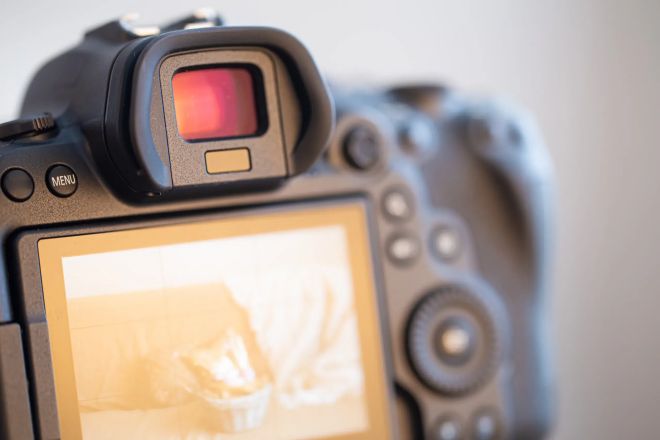
De la scène de concert palpitante à la salle de conférence solennelle, de la scène colorée du défilé de mode à l'espace d'exposition créatif, Afficheurs LED sont partout, enrichissant notre expérience visuelle.
Il n'est cependant pas facile de figer parfaitement ces images éblouissantes. La prise de vue avec des écrans LED n'est pas seulement un test du niveau technique du photographe, mais aussi une exigence globale de diverses capacités. Un peu d'inattention peut faire échouer le plan de prise de vue soigneusement préparé.
Ce guide explorera donc en profondeur l'essence et les compétences nécessaires à la prise de vue d'écrans LED, de la préparation de l'équipement à la mise en œuvre de la prise de vue, et analysera de manière exhaustive comment capturer les meilleurs moments des écrans LED à différentes occasions. Jetons un œil !
1. De quel équipement avez-vous besoin pour préparer la prise de vue d'écrans LED ?
Pour obtenir des images de haute qualité lors de la prise de vue avec des écrans LED, vous devez préparer une série d'équipements et d'outils professionnels. Voici une liste des principaux équipements nécessaires à la prise de vue avec des écrans LED :
1). Matériel photographique
Appareil photo à pixels élevés : le choix d'un appareil photo à pixels élevés peut capturer plus de détails et garantir que le contenu de l'écran LED est clairement visible.
Objectif : Choisissez un objectif adapté en fonction de la distance et de l'angle de prise de vue. Les objectifs grand angle sont adaptés à la capture de vues panoramiques sur de grands écrans, tandis que les téléobjectifs permettent de capturer les détails à distance.
Trépied : Un trépied stable peut garantir que l'appareil photo ne tremble pas pendant la prise de vue afin d'obtenir une image claire.
2). Équipement auxiliaire
Télécommande ou câble d'obturation : l'utilisation d'une télécommande ou d'un câble d'obturation peut éviter les empreintes digitales et les ombres des mains lorsque vous touchez l'écran de l'appareil photo tout en réduisant le tremblement de l'appareil photo.
Filtres : Selon l'environnement de prise de vue et les conditions d'éclairage, vous devrez peut-être utiliser des filtres pour réduire les reflets, améliorer les couleurs ou ajuster l'exposition.
Carte mémoire et piles de rechange : Assurez-vous qu'il y a suffisamment d'espace sur la carte mémoire pour stocker les photos prises et préparez des piles de rechange en cas de faible puissance.
3). Lumière et matériel d'éclairage
Réflecteur ou lumière d'appoint : En cas de lumière insuffisante ou inégale, un réflecteur ou une lumière d'appoint peut être utilisé pour compléter la lumière afin de rendre le contenu de l'écran LED plus lumineux et plus clair.
Pare-soleil : lors de prises de vue dans un environnement à forte luminosité, l'utilisation d'un pare-soleil peut réduire les reflets et les reflets sur l'objectif.
2. Comment photographier des écrans LED à différentes occasions
Pour photographier des écrans LED à différentes occasions, vous devez adapter la stratégie et les techniques de prise de vue en fonction de l'environnement et des besoins spécifiques. Voici quelques suggestions pour photographier des écrans LED à différentes occasions :
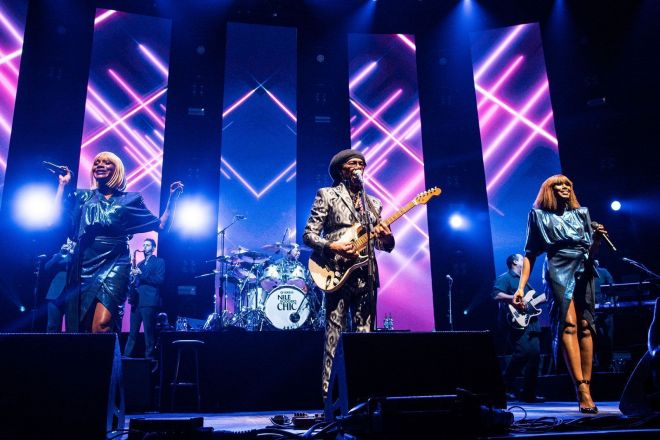
1). Concert
1.1). Points de tir :
- Sélection de l'heure :
Le meilleur moment pour filmer est généralement lorsque le concert touche à sa fin, lorsque les effets d'éclairage et d'écran LED sont les plus riches et les plus stables. À ce moment-là, le public et les artistes sur le organiser sont dans un état plus détendu et il est facile de capturer des images naturelles et vives.
- Position et angle :
Essayez de trouver un emplacement élevé, comme le dernier étage ou les ailes latérales de l'auditorium, afin de capturer une perspective de scène plus large.
L'utilisation d'un téléobjectif peut vous aider à vous rapprocher de la scène tout en réduisant l'interférence de la foule sur la scène. Évitez de vous tenir directement devant l'écran LED pour réduire l'impact des reflets et des éblouissements sur la prise de vue.
- Exposition et balance des blancs :
L'éclairage du concert est complexe et variable, et les paramètres d'exposition et de balance des blancs de la caméra doivent être ajustés en fonction de la situation réelle.
Vous pouvez essayer d'utiliser le mode de mesure spot de l'appareil photo pour mesurer les hautes lumières sur l'écran LED afin d'obtenir une exposition précise. Dans le même temps, la balance des blancs doit être ajustée en fonction de la température de couleur de l'éclairage de la scène pour garantir une reproduction précise des couleurs.
- Composition et créativité :
Lors de la composition, veillez à combiner de manière organique des éléments tels que la scène, l’écran LED, les interprètes et le public pour former une image visuellement percutante.
Vous pouvez essayer d'utiliser des méthodes de composition classiques telles que la règle des tiers et la composition symétrique ou utiliser des éléments tels que le premier plan et le cadre pour augmenter la superposition et la profondeur de l'image.
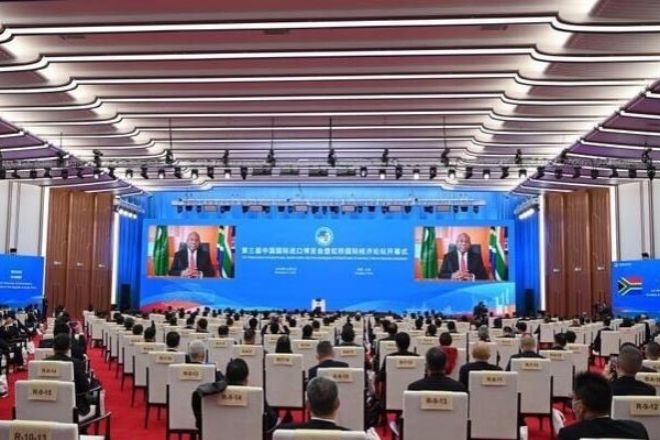
2). Réunion
2.1). Points clés pour le tournage :
- Sujet clair :
Lorsque vous prenez des photos de réunion, vous devez d'abord clarifier le sujet et le but de la photo. S'il s'agit de montrer le contenu de la réunion, vous devez vous assurer que les informations sur l'écran LED sont claires et visibles ; s'il s'agit de mettre en valeur la personne, vous devez placer la personne au centre de l'image et vous assurer que son visage est correctement exposé.
- Paramètres de l'appareil photo :
Choisissez les paramètres de caméra appropriés en fonction des conditions d'éclairage du lieu de la réunion. Si la lumière est faible, vous pouvez augmenter la valeur ISO de manière appropriée pour augmenter la quantité de lumière entrante, mais vous devez veiller à contrôler la génération de bruit.
Dans le même temps, la vitesse d'obturation et la taille de l'ouverture doivent être ajustées en fonction de la disposition du lieu de réunion et de la position de la personne pour obtenir une photo nette.
- Utilisation du flash :
Lorsque vous utilisez un flash sur le lieu de la réunion, vous devez faire attention à éviter l'inconfort causé par l'exposition directe aux yeux de la personne. Vous pouvez choisir d'utiliser un diffuseur ou d'ajuster l'angle du flash pour rendre la lumière plus douce et plus naturelle.
Si le flash est interdit sur le lieu de la conférence, pensez à utiliser une valeur ISO élevée et une vitesse d’obturation plus lente pour compenser le manque de lumière.
- Composition et détails :
Lors de la composition, veillez à combiner de manière organique des éléments tels que l'orateur, le public et l'écran LED de la conférence. Vous pouvez essayer d'utiliser différentes méthodes de composition, telles que la composition symétrique, la composition selon la règle des tiers, etc., pour mettre en valeur le thème et l'atmosphère de la conférence.
Dans le même temps, veillez à capturer les détails du site de la conférence, tels que les slogans, les bannières, etc., pour augmenter la quantité d'informations et la superposition des photos.
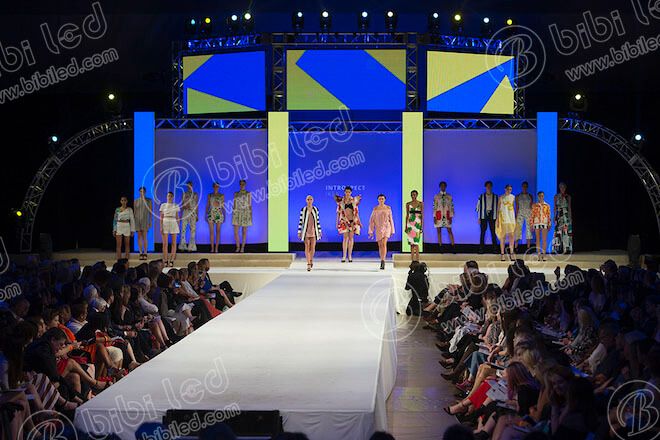
3). Défilé de mode
3.1). Points de tir :
- Capture dynamique :
Les mannequins et les écrans LED du défilé de mode sont en mouvement constant, vous devez donc régler une vitesse d'obturation plus rapide pour capturer des moments clairs. Dans le même temps, l'utilisation de la prise de vue en continu peut vous aider à capturer des moments plus merveilleux et à augmenter le taux de réussite de la prise de vue.
- Utilisation de la lumière :
L'éclairage sur le site du défilé de mode est souvent plus complexe et variable, et vous devez exploiter pleinement les effets lumineux des éclairages et des écrans LED sur place pour créer une atmosphère et des effets visuels uniques. Vous pouvez essayer d'utiliser différents angles et intensités d'éclairage pour mettre en valeur la texture et la couleur des vêtements.
- Composition créative :
Lors de la composition, vous pouvez essayer de photographier les modèles et les écrans LED sous différents angles et hauteurs. La prise de vue en contre-plongée peut mettre en valeur la grande silhouette du modèle et les belles lignes des vêtements ; la prise de vue en plongée peut montrer l'effet global des vêtements et de la mise en scène.
En même temps, vous pouvez utiliser des éléments tels que le premier plan et le cadre pour augmenter la superposition et la profondeur de l'image.
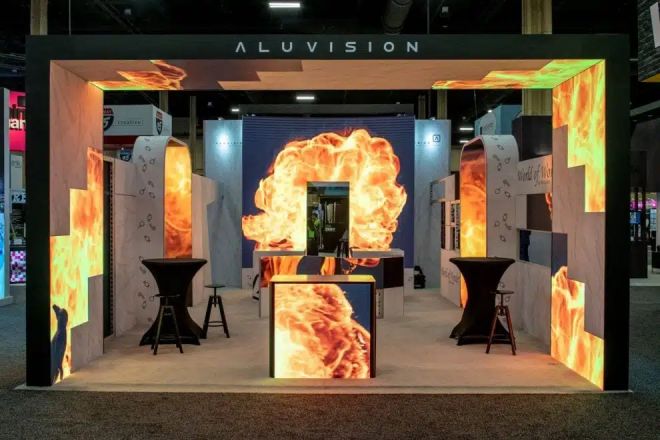
4). Exposition montrer
4.1). Points de tir :
- Analyse environnementale :
Avant d'entrer dans le site de l'exposition, analysez brièvement l'environnement de l'exposition. Comprenez le thème, l'agencement et les conditions d'éclairage de l'exposition pour mieux planifier l'itinéraire de prise de vue et la méthode de composition.
- Combinaison d'expositions et d'écrans :
Lors de la prise de vue, veillez à combiner les éléments exposés avec le contenu de l'écran LED. Vous pouvez essayer de placer les éléments exposés devant ou autour de l'écran LED et utiliser le texte, les motifs et d'autres éléments sur l'écran pour mettre en valeur les caractéristiques et les points forts des éléments exposés. En même temps, veillez à garder l'image propre et simple et à éviter que trop d'éléments désordonnés n'interfèrent avec la ligne de visée.
- Capture de détail :
Les expositions contiennent souvent de nombreux détails, tels que le matériau, la texture, la couleur, etc. des objets exposés. Lors de la prise de vue, veillez à capturer ces éléments de détail pour montrer le charme et le savoir-faire uniques des objets exposés.
- Interaction et ambiance :
Si l'exposition comporte des interactions avec le public ou une création d'ambiance particulière, vous pouvez essayer de capturer ces moments pour montrer la vivacité et le plaisir de l'exposition. En même temps, veillez à garder l'image naturelle et réaliste, et évitez les poses excessives ou artificielles.
5). Conseils généraux
Prise de vue stable : quel que soit l'endroit où vous photographiez l'écran LED, vous devez maintenir l'appareil photo stable. Vous pouvez utiliser un trépied ou un autre équipement de stabilisation pour réduire l'impact du bougé de l'appareil photo sur la prise de vue.
Prise de vue test : effectuez plusieurs prises de vue test avant la prise de vue officielle pour ajuster les réglages de l'appareil photo et les paramètres de prise de vue. Grâce à la prise de vue test, vous pouvez vous familiariser avec l'environnement sur place et les conditions d'éclairage et vous préparer à la prise de vue officielle.
Post-traitement : après la prise de vue, vous pouvez utiliser un logiciel de post-traitement pour recadrer les photos, ajuster la couleur et le contraste, etc. afin d'améliorer les photos.
3. Quelles sont les précautions à prendre lors de la prise de vue d'écrans LED ?
Lors de la prise de vue d'écrans LED, vous devez prêter attention aux aspects suivants pour garantir des photos ou des vidéos de haute qualité :
1). Préparation du matériel
Appareil photo et objectif : Choisissez un appareil photo à pixels élevés et un objectif adapté, et choisissez un objectif grand angle ou téléobjectif en fonction de la distance et de l'angle de prise de vue.
Trépied : utilisez un trépied pour stabiliser l'appareil photo afin d'éviter les images floues causées par les tremblements causés par la prise de vue à main levée.
Télécommande ou câble d'obturateur : utilisez une télécommande ou un câble d'obturateur pour prendre des photos afin de réduire les empreintes digitales et les ombres des mains causées par le contact avec l'écran de l'appareil photo.
2). Contrôle de l'exposition
Mode manuel : il est recommandé d'utiliser le mode manuel de l'appareil photo (mode M) pour contrôler l'exposition avec précision, y compris l'ouverture, la vitesse d'obturation et l'ISO.
Compensation d'exposition : en fonction de la luminosité de l'écran LED et de la lumière ambiante, ajustez la compensation d'exposition de manière appropriée pour obtenir l'exposition correcte.
Balance des blancs : définissez la balance des blancs appropriée pour garantir que les couleurs de l'écran LED sont restaurées avec précision.
3). Compétences de tir
Distance de prise de vue : déterminez la distance de prise de vue appropriée en fonction du pas de point et du facteur de remplissage de l'écran LED. En règle générale, une distance trop proche entraînera une surexposition de l'image, et une distance trop éloignée risque de ne pas permettre de capturer clairement les détails à l'écran.
Évitez les reflets : évitez de photographier devant l'écran LED pour réduire l'impact des reflets et des reflets sur la photo. Vous pouvez rechercher des positions de lumière latérale ou de contre-jour pour photographier.
- Mise au point précise : assurez-vous que l'appareil photo effectue une mise au point précise, en particulier lorsqu'il y a du texte ou des informations importantes sur l'écran LED ; vous devez vous assurer que les informations sont claires et lisibles.
4). Considérations environnementales
Environnement lumineux : Faites attention à l'environnement lumineux du lieu de prise de vue pour éviter qu'une lumière trop forte ou trop faible n'affecte la prise de vue. Si nécessaire, utilisez un réflecteur ou un éclairage d'appoint pour améliorer les conditions d'éclairage.
Arrière-plan et premier plan : veillez à ce que l'arrière-plan et le premier plan correspondent et évitez que des éléments encombrants n'interfèrent avec le corps principal de l'image. Vous pouvez essayer d'utiliser un arrière-plan simple pour mettre en valeur le contenu de l'écran LED.
Propreté : Vérifiez si la surface de l'écran LED est propre avant la prise de vue pour éviter la poussière ou les empreintes digitales qui affectent la qualité de l'image.
4. Problèmes pouvant survenir lors de la prise de vue d'écrans LED
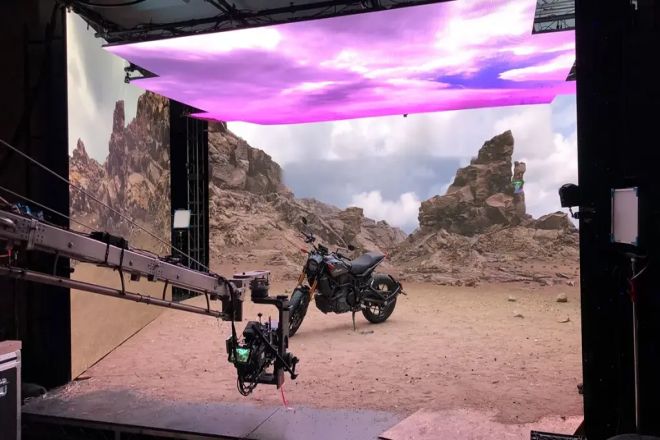
Lors de la prise de vue avec des écrans LED, vous pouvez rencontrer de nombreux problèmes, principalement dus aux caractéristiques des écrans LED, aux limitations de l'équipement de prise de vue et à la complexité de l'environnement de prise de vue. Voici quelques problèmes courants et leurs brèves descriptions :
1). Phénomène stroboscopique
Le phénomène stroboscopique se manifeste par des scintillements ou des bandes scintillantes sur l'écran LED lors de la prise de vue, ce qui est généralement causé par l'inadéquation entre le taux de rafraîchissement de l'écran et le taux d'échantillonnage de l'appareil de prise de vue.
1.1). Cause :
Similairement au moiré, le phénomène stroboscopique est également causé par l'inadéquation entre les appareils. La différence est que le phénomène stroboscopique se concentre davantage sur la différence entre la fréquence de rafraîchissement de l'écran lui-même et la vitesse à laquelle l'appareil de prise de vue capture les images.
1.2). Solution:
Ajustez les paramètres de l'appareil de prise de vue, en particulier la vitesse d'obturation, pour qu'ils correspondent au taux de rafraîchissement de l'écran.
Utilisez un stabilisateur externe : réduisez les tremblements et les saccades pendant la prise de vue, ce qui contribue à réduire les phénomènes stroboscopiques.
Choisissez un écran à taux de rafraîchissement élevé : si les conditions le permettent, vous pouvez le remplacer par un écran LED avec un taux de rafraîchissement plus élevé.
2). Problème d'exposition
Lors de la prise de vue d'écrans LED, vous pouvez rencontrer des problèmes de sous-exposition ou de surexposition, entraînant des images trop sombres ou trop lumineuses.
2.1). Cause :
Les problèmes d’exposition sont généralement liés aux conditions d’éclairage de l’environnement de prise de vue, à la luminosité de l’écran et aux paramètres d’exposition de l’appareil de prise de vue.
2.2). Solution:
Utiliser un flash : dans des conditions de faible luminosité, vous pouvez utiliser un flash pour fournir un éclairage supplémentaire à l’écran.
Ajuster les paramètres d'exposition : en fonction de l'environnement de prise de vue et de la luminosité de l'écran, ajustez la compensation d'exposition de l'appareil photo, la sensibilité ISO et d'autres paramètres.
Utilisez un pare-soleil : réduisez l’impact de la lumière externe sur la prise de vue et conservez la clarté de l’image.
3). Distorsion des couleurs
Lors de la prise de vue sur des écrans LED, vous pouvez rencontrer des problèmes de distorsion des couleurs ; c'est-à-dire que la couleur sur l'écran est incompatible avec la couleur de l'image après la prise de vue.
3.1). Cause :
La distorsion des couleurs peut être liée au mode couleur de l’écran, au réglage de la balance des blancs de l’appareil de prise de vue et aux conditions d’éclairage de l’environnement de prise de vue.
3.2). Solution:
Régler la balance des blancs : ajustez le paramètre de balance des blancs de l'appareil photo en fonction des conditions d'éclairage de l'environnement de prise de vue.
Choisissez le bon mode couleur : assurez-vous que la couleur de l'écran correspond au mode couleur de l'appareil de prise de vue.
Post-traitement : utilisez un logiciel de traitement d’image pour corriger et ajuster la couleur pendant le post-traitement de l’image.
4). Réflexion et éblouissement
Lors de la prise de vue sur des écrans LED, vous pouvez rencontrer des problèmes de réflexion et d'éblouissement, c'est-à-dire que le contenu de l'écran est réfléchi ou qu'un éblouissement se produit.
4.1). Cause :
La réflexion et l'éblouissement sont généralement causés par la lumière externe (comme la lumière du soleil) qui brille sur la surface de l'écran et se reflète dans l'appareil de prise de vue.
4.2). Solution:
Utiliser un pare-soleil : équipez l'appareil de prise de vue d'un pare-soleil pour réduire les interférences de la lumière extérieure.
Ajustez l'angle et la position de prise de vue : essayez d'éviter de pointer l'appareil de prise de vue directement vers la source lumineuse ou la surface réfléchissante.
Éteignez les lumières inutiles : éteignez ou ajustez les lumières environnantes avant la prise de vue pour réduire les reflets et l'éblouissement.
Conclusion
Grâce à l'étude de cet article, nous avons appris une série de méthodes et de techniques sur la façon de photographier efficacement des écrans d'affichage LED, du choix du bon équipement de prise de vue, du réglage des paramètres de l'appareil photo, à l'application des techniques et des précautions de prise de vue, au post-traitement et à la synthèse, chaque étape est cruciale.
Cependant, le chemin vers la prise de vue est sans fin et l'innovation et le développement technologiques nous attendent toujours. Par conséquent, nous encourageons chaque lecteur à essayer constamment de nouvelles techniques de prise de vue et des expressions créatives tout en maîtrisant les compétences de base et en utilisant des perspectives uniques et une réflexion approfondie pour capturer les histoires et les émotions derrière l'écran LED.
Enfin, si vous souhaitez en savoir plus sur les écrans d'affichage LED, veuillez nous contacter.
